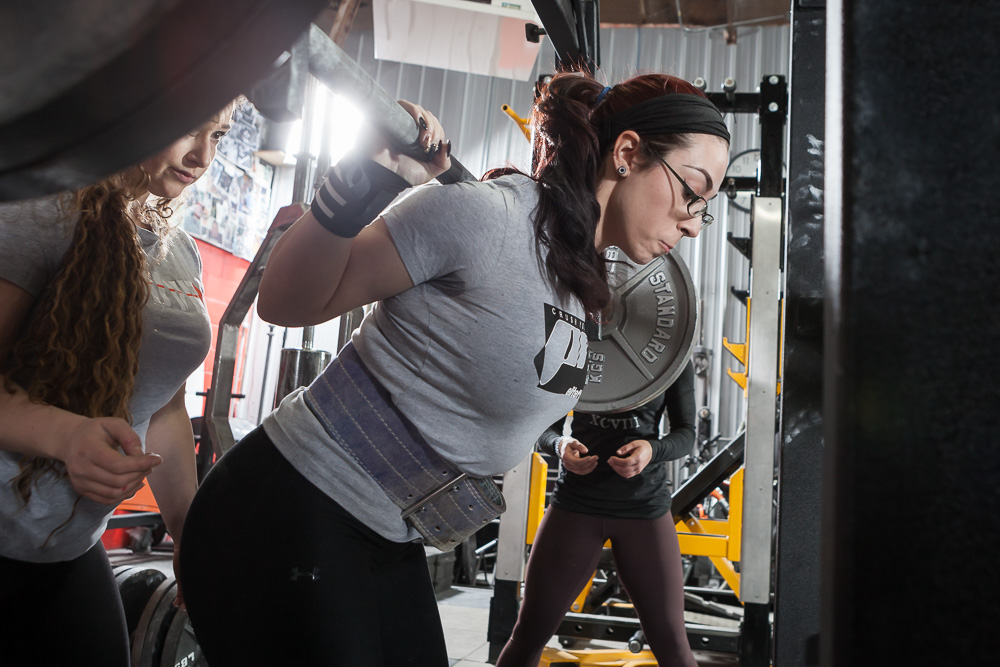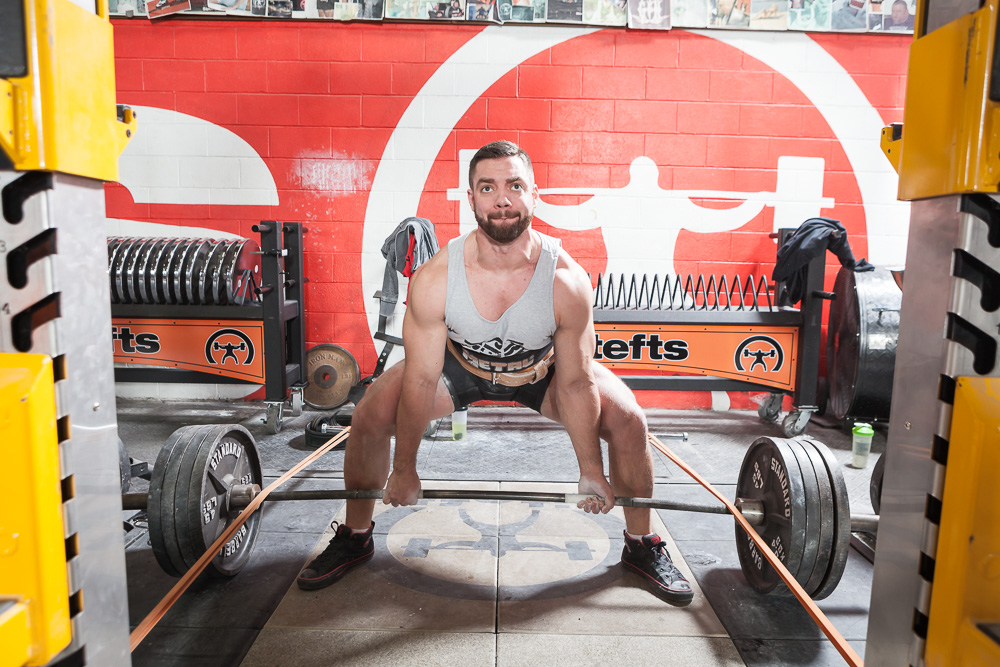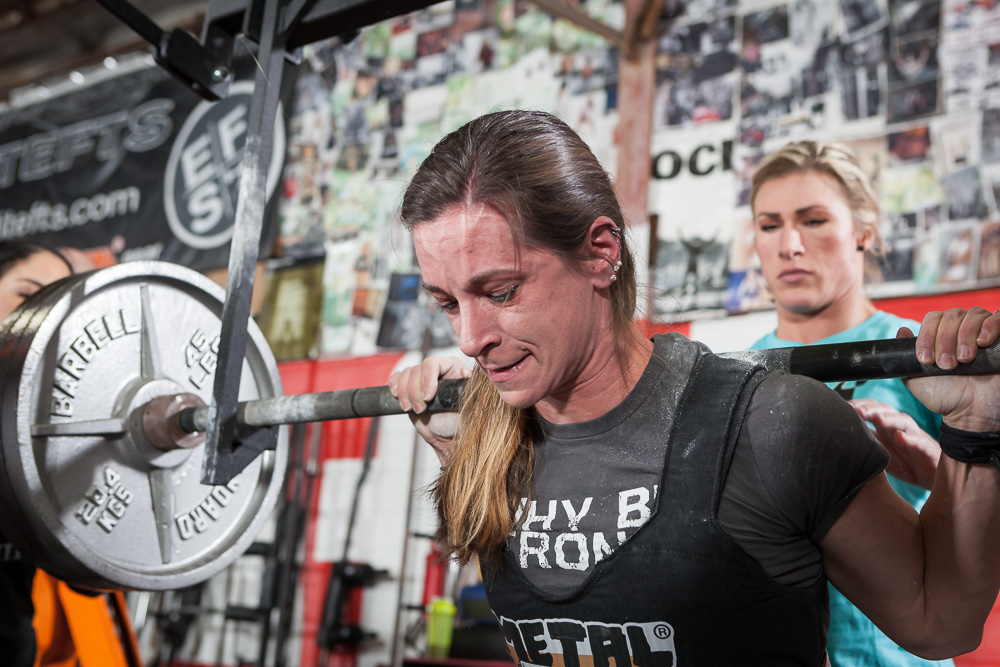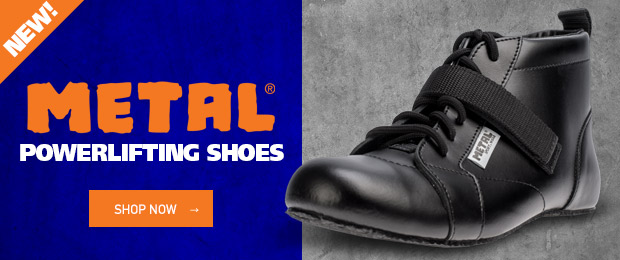
Sometimes you just have to load up the bar with good old-fashioned straight weight. There are so many advancements in strength training today that it can cloud the simple truth—sometimes the old ways are the best ways. I'm all for advancements in training, but not all of them will stand the test of time and some of them will get seriously overused. It's important to remember the tried and true ways while still utilizing the new theories that have promise. One of these tried and true old ways that I still believe in is feeling super maximal straight weights.
Accommodating resistance is very common in strength training today, and I believe there are good reasons for that. I also believe that it gets very overused and, in many cases, builds up a false sense of security. When lifters first started using bands and chains, they were used more for speed work. They allowed maximum momentum to be generated without having to slow the bar speed at the top of a movement or unsafely throw the weight up and catch it. This has always made a lot of sense to me, and the majority of my use of bands and chains has always been with dynamic work. From what I've seen over the last four or five years, the use of bands and chains has increased tremendously. It's increased so much that I've seen lifters who use them in every training session. This doesn't make much sense to me. I can see a benefit to using them on some max effort days or worked in on some regular training days if you don't use a Westside (conjugate or force training) style of training. But it seems to me that lifters still need to feel plain, old, super maximal weight in their hands and on their backs. Just a plain, old, steel bar and some plain, old, iron plates.
It seems that many lifters are now under the impression that bands and chains count as regular weight. Lifters will tell me that they lifted so much weight, but after seeing a video or talking further, I find out that it was with chains, bands or reverse bands. You didn't do a squat, bench or deadlift if you used chains or bands. What you did was a band lift, a chain lift or a reverse band lift. It wasn't a full squat if you had reverse blue bands. You did a reverse blue band squat. If you did a squat with 500 pounds of weight and 300 pounds of chain, you didn't do an 800-pound squat. You did a 500-pound squat with 300 pounds of chain.
I've used chains and bands throughout the majority of my powerlifting career and they aren't the same as straight weight. They don't feel the same, and there isn't any equivalency between the two. Bands and chains were added into strength training to assist a person in getting stronger. They weren't meant to be used every time you train. I have yet to be in or attend a competition that uses bands or chains. So why then would any lifter use bands and chains in every training session? Maybe I'm stating the obvious here, but I regularly see lifters using bands and chains who rarely lift heavy using just straight weight. These same lifters end up bewildered about why they didn't hit the numbers they thought they would in competition.
I don't understand why lifters are so obsessed with how much “weight” bands and chains add to the bar. First off, bands add tension to the bar, not weight. The more the bands stretch, the more tension they add. I know there are standards for different sized bands, but these are just standard, rough estimates. This is to give you a general idea of which band to choose. The amount of tension will be affected by how the bands are set up. Also, a lifter's height and stance will affect the tension. If two lifters are training together and one is taller than the other, the taller lifter will have more tension if both lifters are using similar stances. So basically, unless the tension is measured for the same band setup and the same height, the tension will be different. Even if a lifter does measure the tension (it's a pain in the ass to do so), it still isn't the same as straight weight.
Chains are similar in that people measure the weight of the chain, but they don't take into consideration the amount of chain that actually deloads or the amount of chain that will still be dragging the floor even at the tallest part of the movement (there should always be a few links dragging the floor to keep the chains from swaying). The chains feel more similar to straight weight, but they're still deloaded through the movement. I can understand keeping track of the weights you lift with the bands and chains on max effort movements because a lifter should always be trying to get a PR with that movement. But this doesn't equate to a full movement, so I feel it's best to keep track of bar weight and either chain weight or which band was used. Using band or chains makes the movement a completely different movement. Again, I just don't see the big concern over how much actual “weight” the bands or chains add.
Another factor with bands is the setup. I often see lifters set the bands up incorrectly. They either set the bands up so that they pull them a little forward or a little backward. This makes the lift feel completely different from a lift with straight weight. I've also found that it will mess up a lifter's stability when he finally does go back to straight weight. Lifters should be set up to pull in a straight line though the movement.
I see lifters who set the bands up with inconsistent tension increases. Basically, they set them up so that the tension is completely off before the bottom of the lift or they have it without any tension at all in a reverse band situation. The band will have slack at the bottom of a lift or slack at the top of a reverse band lift. This is an improper way to use the bands. There should always be tension on the band so there is a smooth increase in tension or a smooth deload of the weight in reverse band situations. Again, this doesn't feel like straight weight and makes it very hard to even know exactly how much tension is on the bar.
As much as I believe in the use of bands and chains, I still believe that lifters need to feel plain old straight weight at times. I think lifters get wrapped up in the whole band and chain training and then end up doing it too much. They end up getting a false sense of how strong they really are. I'm all for positive attitude, but that gets thrown out the window when you pick up 800 pounds of straight weight and the only thing you've lifted close to that is 600 pounds plus a blue band. When lifters set the bands up incorrectly and get used to lifting with tension either pulling them back or forward, it will eventually haunt them. I see this situation often at meets where the lifter picks the bar up and is severely unstable because he's used to that forward or backward tension. Bands and chains definitely have their place, but there are still some old school principles that just can't be beat.
I've always had my guys lift super maximal straight weights. I believe this gives the lifter a mental edge because he feels it and has time to get used to it. He is then able to pick up the weight and set up easily at the competition. This also allows him the confidence to slow down and not rush the lift. I believe that it helps train the central nervous system to get used to these type of loads, which helps the body recruit more and deeper muscle fibers. I also believe that it helps build the stabilizer muscles because of the added stress of just supporting these type of loads.
Another benefit that I've found is that it teaches lifters to get used to heavy weights and not fear them. It doesn't matter what's on the bar. Just lift it. If you're using accommodating resistance (bands or chains) on max effort movements, you usually are just as well doing a shorter movement with more straight weight. Good mornings are a great example of this. I've never believed in full good mornings that are parallel to the floor. My thought is that if I ever get in that position in a squat or deadlift, I've already screwed the whole thing up beyond fixing.
MORE: Sick of Your Gym; Part 5 - Getting on the P-Chain
If a lifter ever gets in that position, I recommend a ton of technique work before anything else because he will never get a lift even close to his true potential in that position. For this reason, my team mostly did half to quarter good mornings. This position is a bit more bent than I would be in for a deadlift or squat, but I would be strong enough to save the lift if I do get a little out of position. Plus, it allowed my team to use heavier weight and push our bodies more.
We work up as heavy as possible this way and then keep going up in weight. I go up to the point where I'm basically picking the weight up and just setting up into a good squat position. I know there will be plenty of skeptics who think that a short movement won't work for them enough, but I dare you to try it and see how you feel the next day. I've had many people do a training session like this and they can hardly bend over the next day.
The real key is to truly push your body and lift absolutely as much as you can. Go to a true failure max lift. It's the same in a bench. If you're doing a reverse band press, why not just do a five-board to a max and then work on just handling and setting up with as much as possible. If you've never done this, give it a try and you'll see how much it can help.
If you're a competitive powerlifter, there aren't any band or chain meets. They use good old-fashioned straight weight. In order to compete at your best, you need to be prepared for that, and the best way to be prepared is to actually do it. I think most beginner and intermediate lifters should be doing full range of motion on the three main lifts with straight weight at least every four to six weeks. This will always be the best gauge to see if your training is working and if you are, in fact, strengthening your weak links. It will also allow you to practice technique and critiquing.
I believe that advanced lifters can get away with doing this less, but it's only because they have usually learned other ways to gauge their strength. They have the three main lifts down so well that they don't need to do them as much. I still always do a similar straight weight movement every four to six weeks. My go-to movements are box squats and two-board presses. I know exactly how they translate into full lifts and they don't stress my body as much as the full lifts do (this isn't so much a concern for beginner and intermediate lifters).
When it comes to doing max effort movements, I recommend doing a shorter movement with straight weight at least once every three weeks. I actually prefer the shorter straight weight movements and I do them most of the time while going full range with bands or chains maybe once every six weeks. I use full movements with bands or chains in every dynamic session, which for me is every other week. I'm not saying that full range band or chain work on max effort days is bad. I can definitely see benefits to it. I just feel that it's getting overused and that lifters still need to feel straight weight in full range movements. They'll also benefit greatly from shorter movements with super maximal weights.
As I've said a few times throughout this article, I'm all for advancements in training knowledge. I just think that there are many tried and true, old school methods that we shouldn't forget. I believe that the best way is a little mix of old and new together. If you aren't loading up the bar with super maximal weights, give it a try. It will help increase your strength and stability as well as improve your mental capacity. It will get your body used to lifting heavy weights so that when you're going for that new PR at the meet, you'll pick it up with confidence. In addition, you'll have a blast at the gym just feeling massive weights. You'll be sore as shit the next day, but you'll know that you did something great the day before.














The short answer is that I think there are much better ways to strengthen a sticking point. I think both bands and chain could be beneficial in accessory work. This is a very good question and I am actually going to make my next article about what I feel the best ways to work a sticking point are. Well sticking point usually means a weakness so best ways to work a weakness.